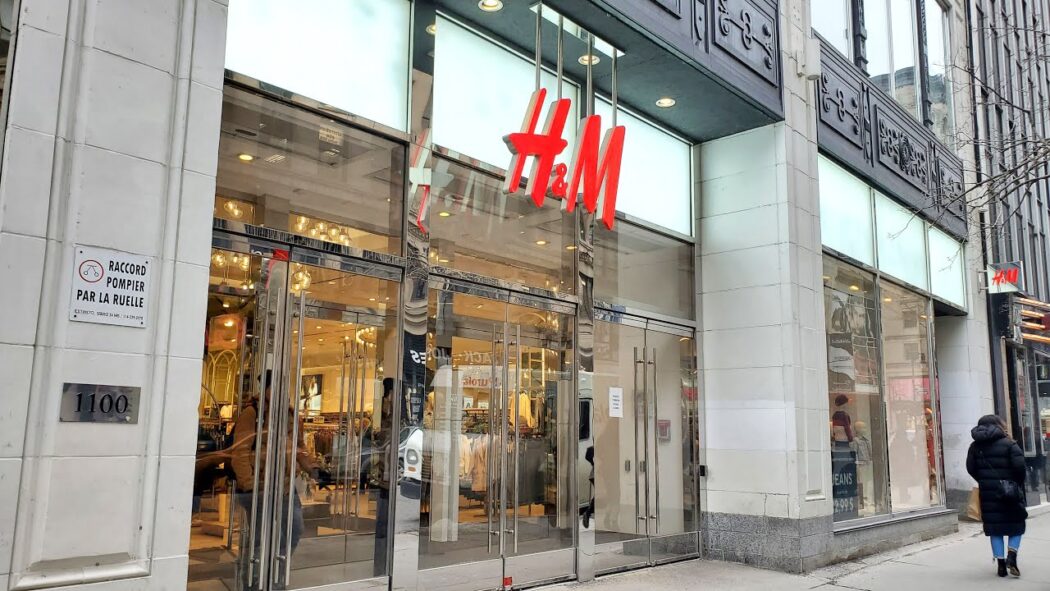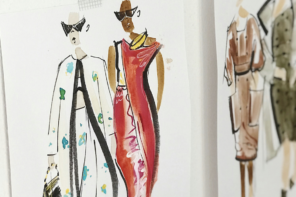There’s no better way to gain fashion inspiration than looking at McGill students’ outfits at the beginning of the fall season. Both the comfortable weather and the untainted excitement encourage McGillians to dress their best for class and show off their trendy new looks. Considering the many new fashion trends that graced 2021, I hadn’t expected another drastic change in popular styles this year. I couldn’t grasp the fact that 2021’s Pinterest-dominating pleated skirts and crewnecks have been completely replaced by midi skirts and knit jumpers. Long fall coats have been traded in for oversized leather jackets, and Y2K low-waisted jeans have begun to gain momentum once again. Most trends and styles I had followed just a couple of months ago have already become ‘dated.’ These fashion trends that I thought would have lasted at least a couple of years ended up lasting barely a few months. Not only has my wardrobe lost its stylistic appeal, but I now have nothing to wear. I had fallen victim to micro-trends.
Micro-trends are accelerated versions of regular trends that both gain and lose popularity faster than a sixth-grade relationship. Compared to macro-trends that often make it through a decade, micro-trends last shy of a season. The growth of social media has only further accelerated this timeline. Applications including Tik Tok that allow regular videos to go viral overnight have had direct influences on fashion trends. For example, videos displaying specific aesthetics spontaneously gain millions of views, enticing their audience to alter their own individual style and follow these wildly popular trends. However, the dynamic nature of these applications allows for these aesthetics to be short-lived. All it takes is a new viral video with a fresh style for the old one to be deemed unfashionable, and for the micro-trend cycle to restart.
The viral nature of social media not only nurtures micro-trends, but also the hyper-critical platform that is quick to engage in cancel culture, influencing the purchasing habits of younger generations
The pressures placed on people to keep up with newer aesthetics, and the constant purchasing of “trendy clothes” is intensified through the critical and judgmental nature of social media. Likes, comments, and views directly correlate value to outward appearances. Failing to abide by the latest trends and fads is undesirable and will be publicly condemned through terms aimed to belittle dated and “cheugy” styles. Deeming products such as skinny jeans, which had dominated most of the 2010s, as “cringy,” cultivates ideas that wearing the style is embarrassing. The viral nature of social media not only nurtures micro-trends, but also the hyper-critical platform that is quick to engage in cancel culture, influencing the purchasing habits of younger generations.
Celebrities and influencers can also be blamed, as they facilitate these micro-trends and wasteful consumerist habits. Their large followings enable them to profit off clothing partnerships by simply appearing in a post, wearing an article of clothing. Their many followers, in hopes to appear as glamorous as their idols, are quick to imitate those same styles. Two years ago, we were satisfied with high-waisted jeans and happy to leave the low-waisted styles back in the early 2000’s. However, all it took was supermodel, Bella Hadid, to be photographed in a pair of low-slung Levi’s for the trend to regain traction some two decades later. Celebrities and influencers are also often given a variety of clothes to wear and are constantly changing their style. When we fail to see any repeat outfits on our idols, we can assume that to achieve their “effortless fashion,” we must own as many clothes as possible. Nevertheless, while it may be more doable for Bella Hadid or Kendall Jenner to finance and adopt new looks regularly, it is incredibly difficult for the average person to keep up.
…all it took was supermodel, Bella Hadid, to be photographed in a pair of low-slung Levi’s for the trend to regain traction some two decades later.
The combination of dynamic fashion trends and mass consumption poses a financial struggle to those who aren’t privileged enough to replace their entire wardrobe every season. Without the incredibly high income of celebrities, and their regular sponsorships that gift them a wide array of clothing, most people are financially pressured to reuse their clothes for longer periods of time. The growth of the fast fashion industry, however, has created a solution for people who wish to afford new, stylish outfits and keep up with these fast changing fashion trends. Companies such as Shein, produce clothing at much lower prices that enable people to purchase a larger amount of clothes more regularly. This allows their customers to keep up with dynamic styles and purchase a variety of trendy outfits – in other words, it enables their mass consumption of clothes. The lower prices allow people to fulfill their glamour dreams and purchase hundreds of clothing articles without breaking the bank.
The consumerist behaviour aided by these cheap manufacturers inevitably results in guiltless waste.
Yet, this conveniently cheap pricing has promotes not only unsustainable consumption and waste but also unethical production methods. As a result, significant consequences are entailed by companies that sell most of their clothes for under $20. The consumerist behaviour aided by these cheap manufacturers inevitably results in guiltless waste. Cheap prices mean cheap quality, guaranteeing a shorter lifespan for each piece of clothing, and therefore resulting in constant repurchases. The inevitability of trends losing momentum causes hundreds of purchases being left to collect dust. This excessive waste lead to significant environmental consequences, it is estimated that “more than half of fast fashion produced is disposed of in under a year.” Furthermore, these companies are also only able to produce affordable clothing at the expense of worker rights. Fast fashion is highly dependent on the use of sweatshops and child labour that violate basic ethical worker rights, and health safety laws. Using these exploitative methods of “cheap labour” allows fast fashion corporations to ensure low production costs that facilitate their attractively low prices. One of the most popular of these corporations, Shein, is one of these unethical companies, in which Shein workers clock three shifts per day with only one day off per month, allowing them to mass produce clothing at cheap prices at the expense of their workers.
While a switch from high-waisted to low-waisted jeans may not appear to pose the biggest threat to humanity, micro-trends, enabled by social media and celebrities, push people towards mass consumption and purchasing from unsustainable fast fashion corporations which threaten both the safety of our planet and garment workers.








